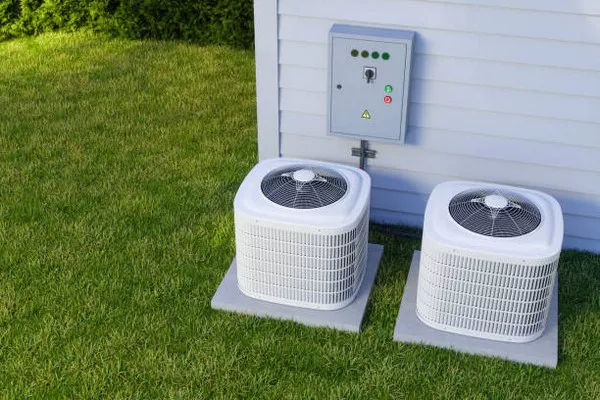Air compressors are versatile tools that can power various pneumatic tools, inflate tires, and perform numerous other tasks. Harbor Freight offers a range of air compressors that are both affordable and reliable, making them popular among DIY enthusiasts and professionals alike. This article provides a detailed guide on how to use a Harbor Freight air compressor, ensuring safety and efficiency in your projects.
1. Understanding the Basics of Air Compressors
Before diving into the specifics of using a Harbor Freight air compressor, it’s essential to understand how air compressors work. An air compressor converts power into potential energy stored in pressurized air. This pressurized air can then be used to power tools and perform other tasks. Air compressors come in various types, including:
- Piston (Reciprocating) Compressors: These use a piston driven by a crankshaft to deliver air at high pressure.
- Rotary Screw Compressors: These use two meshing helical screws to compress the air.
- Portable Compressors: Smaller, lightweight models designed for easy transportation.
Harbor Freight typically offers piston and portable compressors, which are suitable for most home and workshop applications.
2. Choosing the Right Harbor Freight Air Compressor
Selecting the right air compressor from Harbor Freight depends on your specific needs. Consider the following factors:
- Air Pressure (PSI): Ensure the compressor provides sufficient PSI for your tools.
- Air Flow (CFM): Check that the compressor can deliver the necessary cubic feet per minute (CFM) of air.
- Tank Size: A larger tank can store more compressed air, reducing the need for the compressor to run frequently.
- Portability: If you need to move the compressor often, consider a portable model.
Popular models from Harbor Freight include the 21-Gallon 2.5 HP 125 PSI Oil-Lube Air Compressor and the 3 Gallon 1/3 HP 100 PSI Oil-Free Hotdog Air Compressor.
3. Setting Up Your Harbor Freight Air Compressor
Once you’ve selected your air compressor, follow these steps to set it up:
Read the Manual: Before using the compressor, thoroughly read the user manual. This provides specific instructions and safety information for your model.
Inspect the Compressor: Check for any visible damage or loose parts. Ensure all components are secure.
Choose a Location: Place the compressor on a flat, stable surface. Ensure the location is well-ventilated and free of flammable materials.
Oil Check (if applicable): For oil-lubricated models, check the oil level and add oil if necessary. Use the oil type specified in the manual.
Attach Air Filter: Ensure the air filter is clean and properly attached. This prevents dust and debris from entering the compressor.
4. Operating Your Harbor Freight Air Compressor
With the setup complete, you’re ready to operate your air compressor. Follow these steps for safe and efficient operation:
Plug in the Compressor: Connect the compressor to a suitable power source. Ensure the outlet matches the voltage and amperage requirements specified in the manual.
Power On: Turn the compressor on using the power switch. Allow it to run until it reaches the maximum pressure and automatically shuts off.
Adjust Pressure Regulator: Set the pressure regulator to match the PSI requirements of your tool. This ensures optimal performance and safety.
Connect Air Hose: Attach the air hose to the compressor’s air outlet. Ensure a secure connection to prevent air leaks.
Connect Tool: Attach your pneumatic tool to the other end of the air hose. Again, ensure a secure connection.
Operate Tool: Use your pneumatic tool as needed. The compressor will automatically cycle on and off to maintain the set pressure.
5. Maintenance and Troubleshooting
Regular maintenance ensures your Harbor Freight air compressor operates efficiently and has a long lifespan. Here are key maintenance tasks:
Check Oil Level (if applicable): Regularly check and change the oil as specified in the manual.
Drain Tank: After each use, release the pressure and drain any moisture from the tank. This prevents rust and extends the tank’s life.
Inspect Hoses and Fittings: Regularly check for leaks and damage. Replace any worn or damaged parts.
Clean Air Filter: Clean or replace the air filter periodically to ensure efficient operation.
If you encounter issues, consult the troubleshooting section of the manual. Common problems include:
Compressor Won’t Start: Check the power source, circuit breaker, and pressure switch.
Low Pressure: Ensure the pressure regulator is set correctly and check for air leaks.
Overheating: Ensure the compressor is in a well-ventilated area and not overloaded.
6. Safety Tips
Using an air compressor involves certain risks. Follow these safety tips to ensure safe operation:
Wear Safety Gear: Always wear safety glasses and hearing protection.
Avoid Flammable Materials: Keep the compressor away from flammable materials and sources of ignition.
Follow Electrical Safety: Use grounded outlets and avoid using extension cords.
Release Pressure Safely: Before disconnecting the air hose or performing maintenance, release all air pressure from the tank.
7. Advanced Applications
Beyond basic tasks, your Harbor Freight air compressor can be used for various advanced applications, including:
Spray Painting: Use a high-volume, low-pressure (HVLP) spray gun for smooth and even paint application.
Sandblasting: Clean and etch surfaces with a sandblaster attachment.
Nail Guns and Staplers: Power nail guns and staplers for construction and woodworking projects.
Inflating Tires: Quickly and efficiently inflate vehicle and bicycle tires.
Ensure you have the appropriate attachments and understand the specific requirements for each application.
See also Is McGraw a Good Air Compressor?
Conclusion
Using a Harbor Freight air compressor can significantly enhance your efficiency and capabilities in various tasks. By selecting the right model, setting it up correctly, following safe operating procedures, and performing regular maintenance, you can ensure reliable performance and extend the life of your compressor. Whether you’re a DIY enthusiast or a professional, mastering the use of your air compressor will open up a world of possibilities for your projects.

